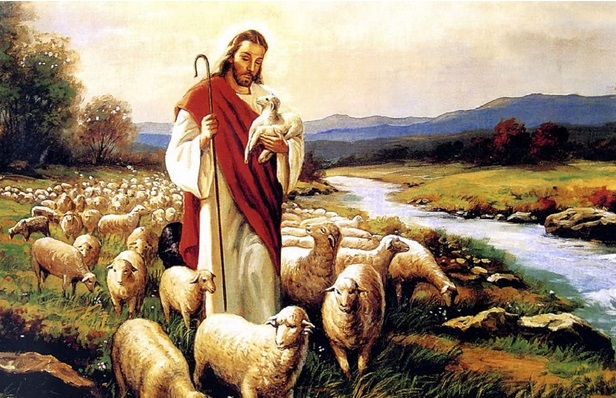Fourth Sunday of Easter: The Lame Walk — An Image of the Church
Today’s First Reading continues the story begun last week about the healing and the interpretation of this event as a sign of the Resurrection.
Apr 24, 2021

4th Sunday of Easter
Readings: Acts of the Apostles 4:8-12;
1 John 3:1-2;
Gospel: John 10:11-18
Today’s First Reading continues the story begun last week about the healing and the interpretation of this event as a sign of the Resurrection. By now it should be apparent that the speeches in the Acts of the Apostles are not “tapes” of what Peter and Paul said but, rather, impositions by Luke. In this he was using a familiar convention common among first-century historians writing in Greek. The brief cameo speech was one of the tools of the ancient historians’ trade; even when they had verbatim reports of what some important figure had said on a given occasion, such historians were expected to use the wisdom of hindsight and compose a more illuminating speech as a way of explaining the deeper significance of the event. Scholars are convinced that Luke is doing exactly that, using the historian's device of the cameo speech and drawing upon the preaching traditions of the early Church to portray in this concise way the meaning of what was happening.
Along with this conventional historical tool of speech writing, Luke employs another device, one that, since the discovery of the Dead Sea Scrolls, we have learned to call the pesher. The Aramaic word for “interpretation,” pesher is the name used by the members of the Qumran community for an interpretation which claimed that an ancient text was being fulfilled in the current or recent events of their own community. For example, they would read an Old Testament text about a future new temple and write a pesher declaring that the Qumran community was the fulfillment of that prophecy. Last week, we saw Luke making a number of such pesher applications in the speech of Acts 3, identifying Jesus as Deuteronomy’s Moses-like prophet and Isaiah’s Suffering Servant, and seeing the Church’s mission to the Gentiles as the fulfilment of the covenant with Abraham in Genesis 12.
In the speech in this Sunday’s reading, we hear a pesher application on Ps 118:22, a psalm verse that seems to have been a favourite of the early Church: “The stone the builders rejected has become the cornerstone.” In the context of the psalm, that verse refers to the community of Israel which the imperial forces of the surrounding nations thought unworthy of their great plans; yet, the Lord has rescued them (e.g., in the return from the Babylonian captivity). But the early Church, searching the Scriptures in the light of their experience of God’s revelation in Jesus, found the language of this psalm applicable in a fresh and powerful way to Jesus. The single verse — “the stone the builders rejected has become the cornerstone” — caught wonderfully, in a few words, the meaning of the death and resurrection of Jesus.
The verse from Psalm 118 contains a further richness: one could not speak of a stone and building without thinking of the Jerusalem Temple, the greatest stone building in their experience. When these same officials in the Temple precincts questioned Jesus by what authority he was doing “these things” (i.e., clearing the Temple and teaching in it), he confronted them with the parable of the wicked tenants and ended with an application of this same quote (“The stone the builders rejected …” Luke 20:17). And now Jesus’ disciples, asked by those officials by what authority they heal and teach in the Temple area, answer in the same way. This is no coincidence.
We know that the early Christian community thought of themselves as the spiritual endtime temple (see 1 Pet 2:3-4, for example), with Jesus imaged sometimes as the foundation stone, sometimes as the capstone. Here, the image is probably capstone. In Luke’s theology, just as the Church is not so much New Israel as the authentic development of Israel, so Jesus, for Luke, does not so much threaten or supplant the Temple as provide its completion.
There is more. Note that the speech plays on the word “saved.” In Luke 9 it refers to physical healing and, in Luke 12, to the fullness of salvation. That double meaning highlights the theme that the cure of the lame man is a sign of the restoration to full covenant unity with God, offered through the ministry of the new temple that is the Christian community.
So, what seems at first to be a quick speech tied to a specific occasion turns out, like all of the speeches in Acts, to be a rather rich meditation on the significance of Easter for the life of the Church. Spirit-led authority in the Church turns rejection into an occasion of healing and salvation. — By Prof Emeritus Fr Dennis Hamm, SJ







Total Comments:0